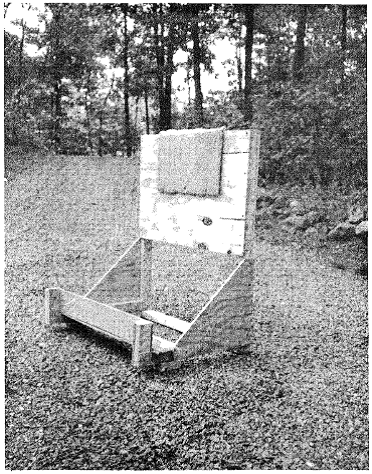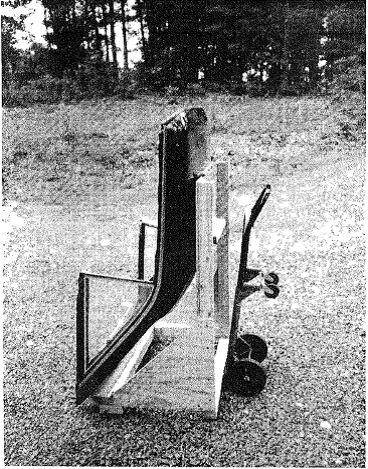by Stu Brennan in the February 1988 Rootes Review
What do you do with your hardtop while it is off the car? Does it sit in some unused corner of your cellar or garage gathering dust and your children’s footprints? Can you move the top easily by yourself?
A stand similar to the one that I have constructed might be the solution to your problem. I designed mine by trial and error after seeing Wally Swift’s metal stand. I wanted something that could protect my top a little better, and I did not need to carry my stand in the car.
I constructed my stand from scraps of lumber I happened to have cluttering up my cellar. As you can see in the photos, the top sits in an upright position consuming a minimum of floor space. If placed with the top’s inside toward the wall, the wooden structure at the rear serves to protect the top from accidental impacts. Initially, I carried the stand on my “two wheeler”, lifting it by a 2×3 installed across the base of the rear section. Later, I installed some swivel casters that were left over from another project. On casters, the stand can travel through 30” doorways easily; but the small wheels do not work well in the “off road” portions of my yard.

I deliberately am not including all of the dimensions, since most builders will probably modify the design to suit their own purposes and to make use of available lumber. The distance between the two ”L” shaped pieces (about 32”) was selected to match the distance between the two little chrome fittings on the rear of the top. The plywood that supports the base of the rear window is quite thin (¼”). This piece flexes and allows most of the weight of the top to be supported on the chrome fittings. The Inside measurement that accommodates the height of the top is about 20”. All of the surfaces that can touch the top are covered with scrap pieces of rug. The points of the chrome fittings dig into the rug and prevent the top from sliding around during transport.
